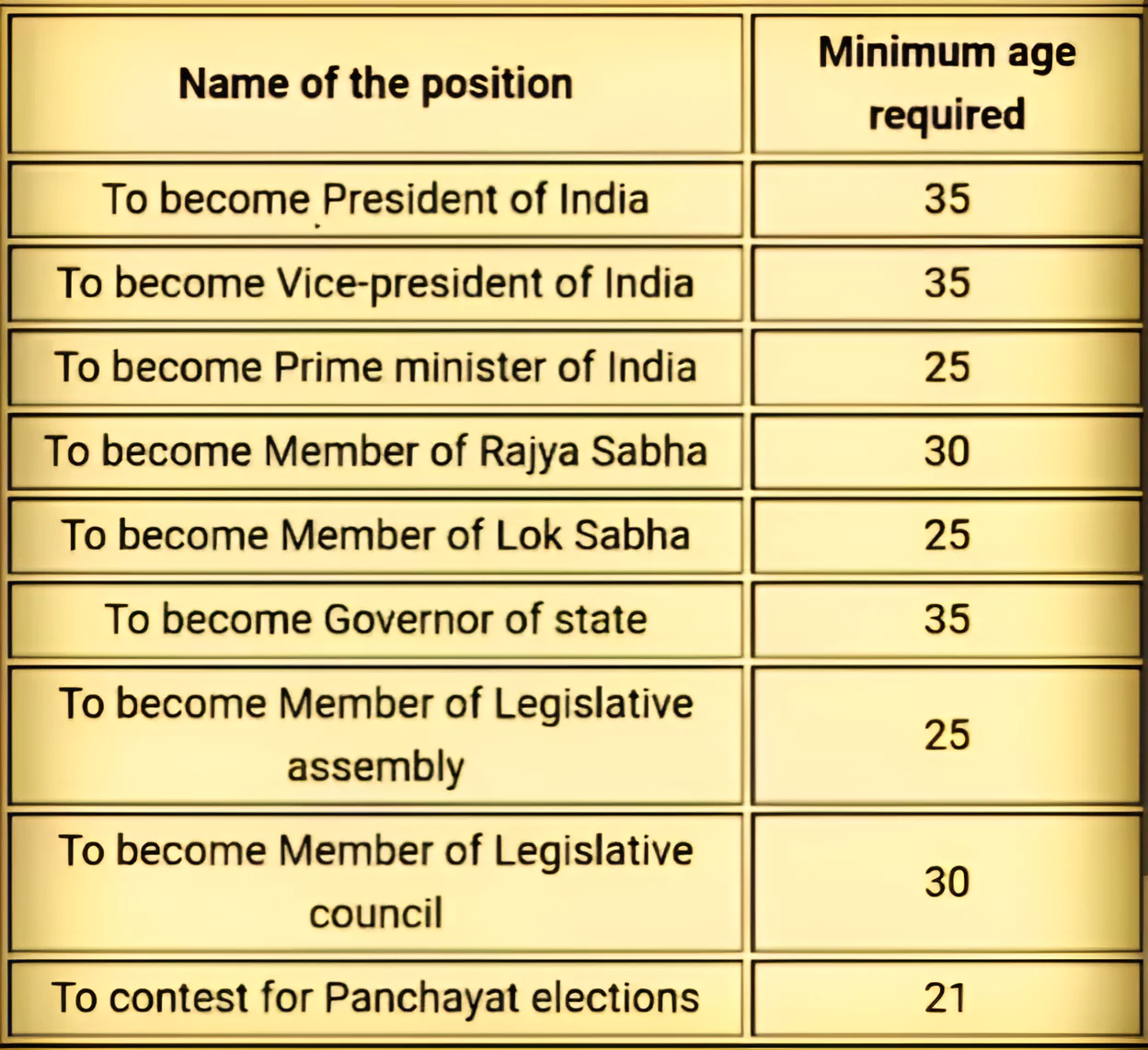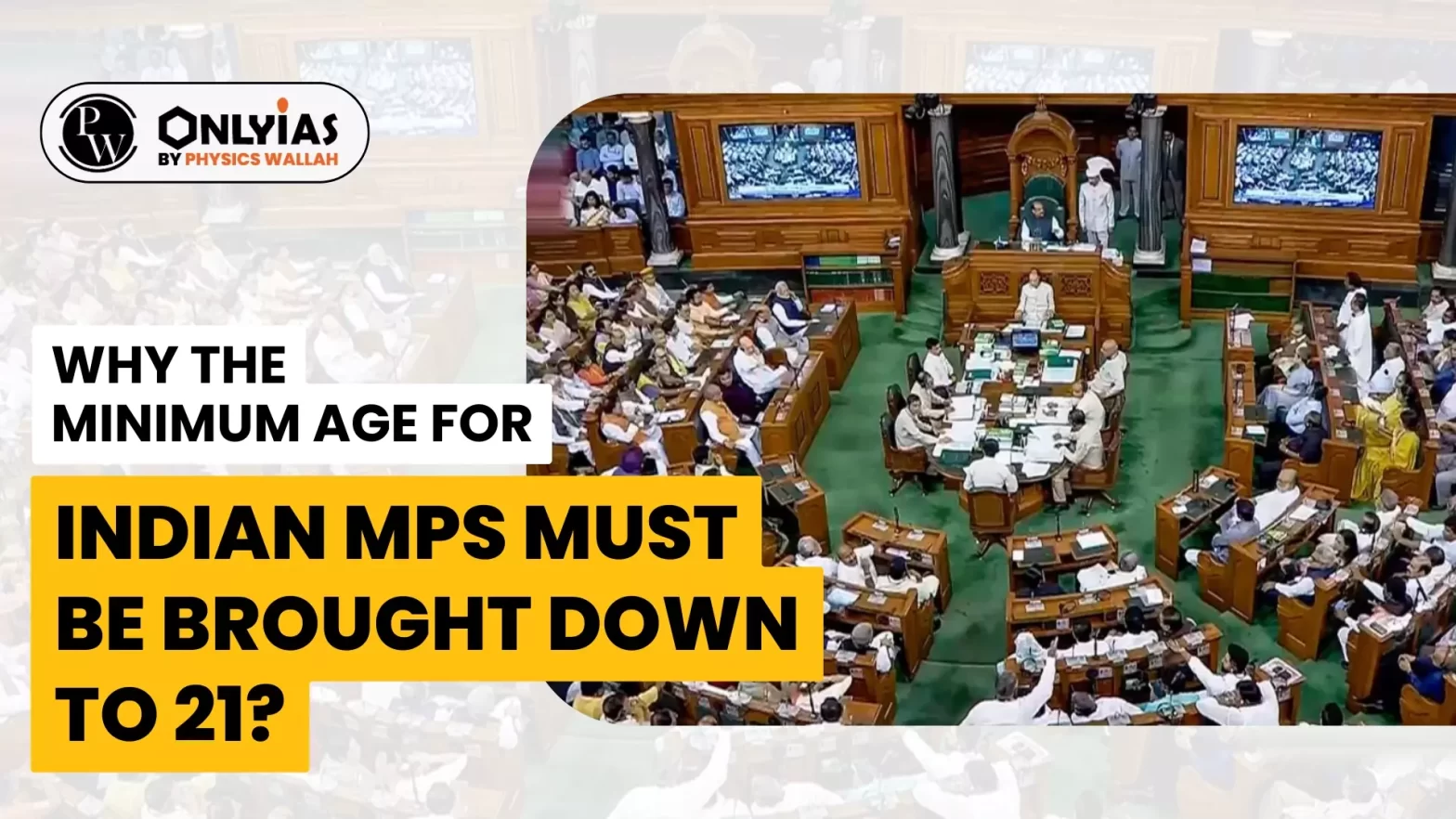Context
The 132nd Report on Election Process and Reform, presented to the Rajya Sabha, recommends reducing the minimum age for candidacy with the voting age of 18.
Enroll now for UPSC Online Course
Constituent Assembly Debate
- Amendment Proposal by Durgabai Deshmukh: Reduction of the minimum age to enter Rajya Sabha from 35 to 30.
 Basis of this Age Reduction: Wisdom does not depend solely on age. Modern education is good enough to make the youth aware towards their civic rights and duties.
Basis of this Age Reduction: Wisdom does not depend solely on age. Modern education is good enough to make the youth aware towards their civic rights and duties. - Supported By: Socialist leader H V Kamath supported lowering the minimum age for entering either House of Parliament (age of 21). Example:
- William Pitt entered the UK parliament at 21 and became the Prime Minister of the country at 24.
- Shibban Lal Saxena (arrested for organizing a hartal in Kanpur to protest the Jallianwala Bagh massacre).
- Tajamul Hussain (barrister and two-time Rajya Sabha MP).
- Outcome: Amendment accepted and Article 84 and 173 of the Indian Constitution prescribes 25 and 30 years as the lower limit for entry into the lower and upper houses respectively at both the Centre and in State Assemblies.
Global Youth Participation and Associated Challenges
- Active Involvement: Young people are proactive about their rights and responsibilities.
- Example: International movement such as “Fridays for Future” advance climate change dialogue globally was started by young activists like Greta Thunberg at age of 15.
- Challenge in Accessing Rights: Its 2018 report highlights challenges faced by youth in accessing their civil, political, social, economic and cultural rights.
- Very Less Representation: Less than 2% of parliamentarians worldwide are under 30, indicating a lack of youth representation.
- No alignment with the Minimum Voting Age: The age of candidacy for national parliaments, and especially for higher office, is not always aligned with the minimum voting age.
Indian Youth Participation
- Lyngdoh Committee (2012) Recommendations: Set upper age limits for student union elections. The average age of student leaders in 2019 was 22.5 years.
- In 1979, Laxmi Shankar Ojha got elected to the Allahabad University Students Union (AUSU) at the age of 52.
- Panchayat Level: Younger individuals (21 years and above) finding representation across states at the level of Village Pradhan, Member of Zilla Parishad, Block Pramukh, etc.
- Parliament Representation: Decline in young MPs (25-40 years) from 26% in the first Lok Sabha to 12% in the 17th Lok Sabha.
- Percentage of Population Below 35 Years: India is a “young country” where 65 per cent of India’s population is below 35 years of age.
- Number of Individuals Aged 18 to 35: A whopping 600 million people in India are aged between 18 to 35 today. India’s median age stands at an exciting 28.2 years.
- Disparity in Legislative Age Requirements: The minimum age to enter the Rajya Sabha (30 years) is more than the country’s median age. This needs introspection and immediate legislative correction.
Need for Youth Involvement in Politics
- Recommendations of the 132nd Report on Election Process Reform: he report suggests lowering the minimum age to contest elections anywhere in India to 18 years, at par with India’s minimum age to vote.
- Lowering of Minimum Age Requirement: European nations such as Bulgaria, the Czech Republic, and Ireland have set lower minimum age requirements for candidates.
- Election Commission’s Stance on Age Requirement: The Election Commission does not favor reducing the age requirement for membership of Parliament and State Legislatures and still maintains that 18-year-olds do not possess the necessary experience and maturity for these responsibilities.
- Plato’s View on Political Competence: Plato held that political competence and maturity come only with age
- Minimum Age Limit at the Constituent Assembly: It was similar reasoning that led to 35 years as the initial minimum age limit for entering the Rajya Sabha at the Constituent Assembly.
- Introduction of Private Members Bill: A Private Member’s Bill was introduced in the Rajya Sabha in Dec 2022.
- It seeks to amend Article 84 and Article 173 of the Constitution to reduce the minimum age to contest elections to 21 years from the current 25 years at the Centre and state.
- Legal Age of Marriage: The legal age of marriage is 21 years for men and the Prohibition of Child Marriage (Amendment) Bill, 2021 aims to legalize age of women for marriage is 21 at par with men.
Enroll now for UPSC Online Classes
Conclusion
Like other modern democracies worldwide, India should revisit age requirements. The age of candidacy has long been a topic of debate. The historical decisions laid a foundation, current global and national contexts
Also Read: Reforms in Municipal Elections in India
| Prelims PYQ (2017):
For election to the Lok Sabha, a nomination paper can be filed by
(a) anyone residing in India.
(b) a resident of the constituency from which the election is to be contested.
(c) any citizen of India whose name appears in the electoral roll of a constituency.
(d) any citizen of India
Ans: (c) |

 Basis of this Age Reduction: Wisdom does not depend solely on age. Modern education is good enough to make the youth aware towards their civic rights and duties.
Basis of this Age Reduction: Wisdom does not depend solely on age. Modern education is good enough to make the youth aware towards their civic rights and duties. 